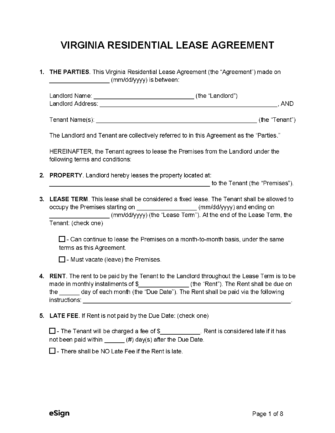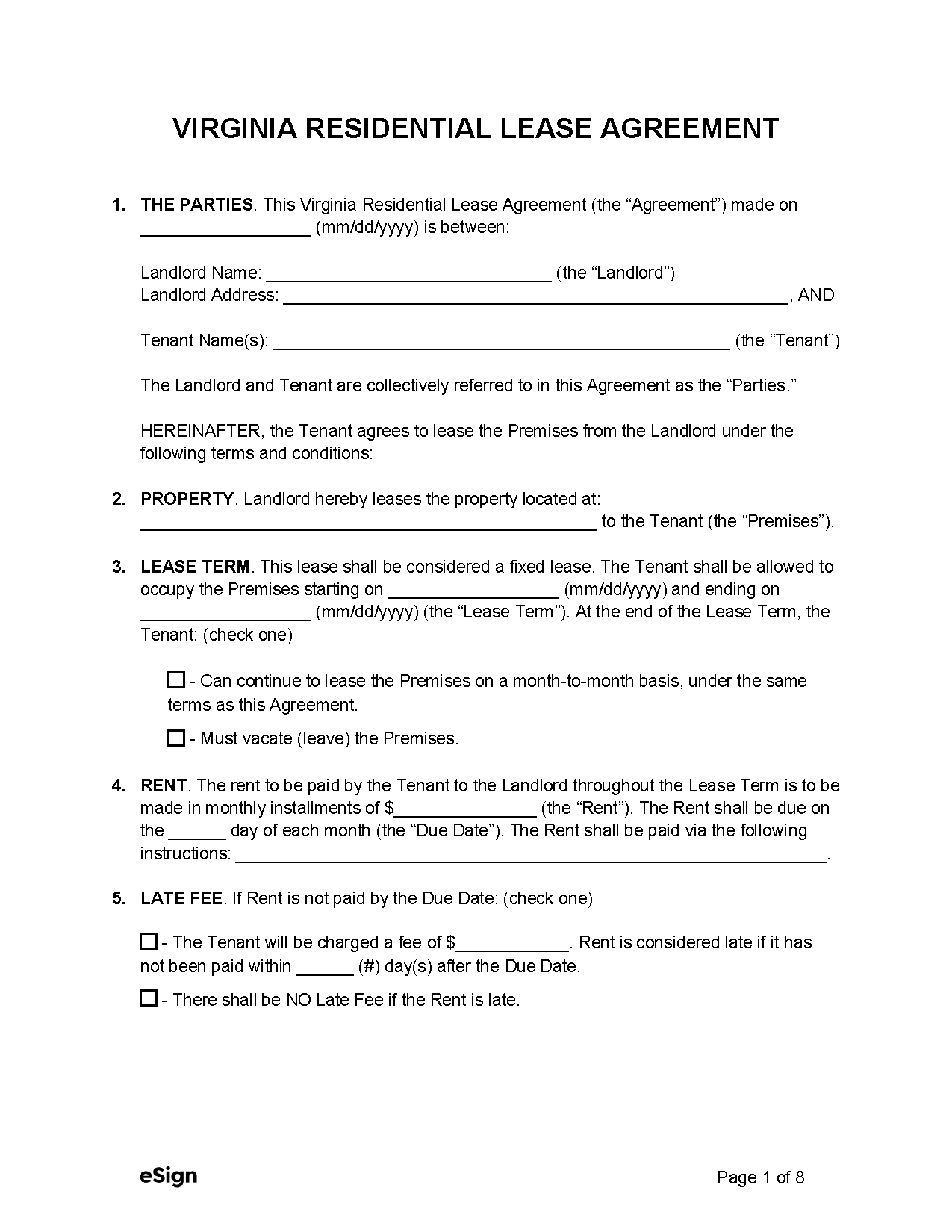Virginia Standard Residential Lease Agreement
A Virginia standard residential lease agreement is used by Virginia landlords to create legally binding rental arrangements with their tenants . Under the terms of the lease, the tenant is granted occupancy for a standard term of 12 months. Among other provisions, the contract must relay the property address, rental price, lease term, and security deposit amount for the lease.
Virginia Standard Residential Lease Agreement
A Virginia standard residential lease agreement is used by Virginia landlords to create legally binding rental arrangements with their tenants . Under the terms of the lease, the tenant is granted occupancy for a standard term of 12 months. Among other provisions, the contract must relay the property address, rental price, lease term, and security deposit amount for the lease.
PDF Download
Email Delivery
Last updated January 26th, 2024

A Virginia standard residential lease agreement is used by Virginia landlords to create legally binding rental arrangements with their tenants . Under the terms of the lease, the tenant is granted occupancy for a standard term of 12 months. Among other provisions, the contract must relay the property address, rental price, lease term, and security deposit amount for the lease.
4.6 | 131 Ratings
Downloads: 25,683

- Home »
- Lease Agreements »
- Virginia »
- Residential
Rental Application – Landlords may require this application to be filled out to examine an individual’s background to determine if they are a good fit for tenancy.
Required Disclosures (11)
- Defective Drywall – Landlords must inform tenants of any defective drywall in the rental unit. [1]
- Demolition or Conversion to Condominium – If there is a pending plan to convert, demolish, or otherwise substantially modify the rental property, a multi-family rental property that would require the displacemen t of the tenants, the affected tenants must be notified. [2]
- Lead-Based Paint Disclosure (PDF) – Used to disclose to the tenant any presence of harmful lead-based paint within a dwelling constructed before 1978. [3]
- Manager and Owner Information – The names and addresses of the property manager, and the owner (or their agent) must be disclosed to the tenant in writing. [4]
- Methamphetamine Disclosure (PDF) – Used to inform the tenant of methamphetamine manufacturing history within the dwelling if it has not been cleaned up in accordance with state law . [5]
- Military Air Installation Disclosure (PDF) – Required if the dwelling is in the vicinity of a military airbase causing excessive noise and posing a risk of potential military accidents. [6]
- Mold – During the move-in inspection, the landlord must disclose any visible mold . [7]
- Move-In Inspection (PDF) – A report of the condition of the dwelling must be completed by the landlord within five days after the start of the tenancy. [8]
- Sale of Property – If the property gets sold during their tenancy, the tenant must be provided the new owner’s name, address, and phone number. [9]
- Statement of Tenant Rights and Responsibilities (PDF) – The Department of Housing and Community Development’s tenant’s rights form must be provided to the tenant and signed by both parties. [10]
- Tourism Activity Zone – Tenants moving into a dwelling in a tourism activity zone must be informed about potential disturbances. [11]
Security Deposit Laws
- Maximum Amount ($) – 2 months’ rent. [12]
- Returning to Tenant – 45 days. [13]



